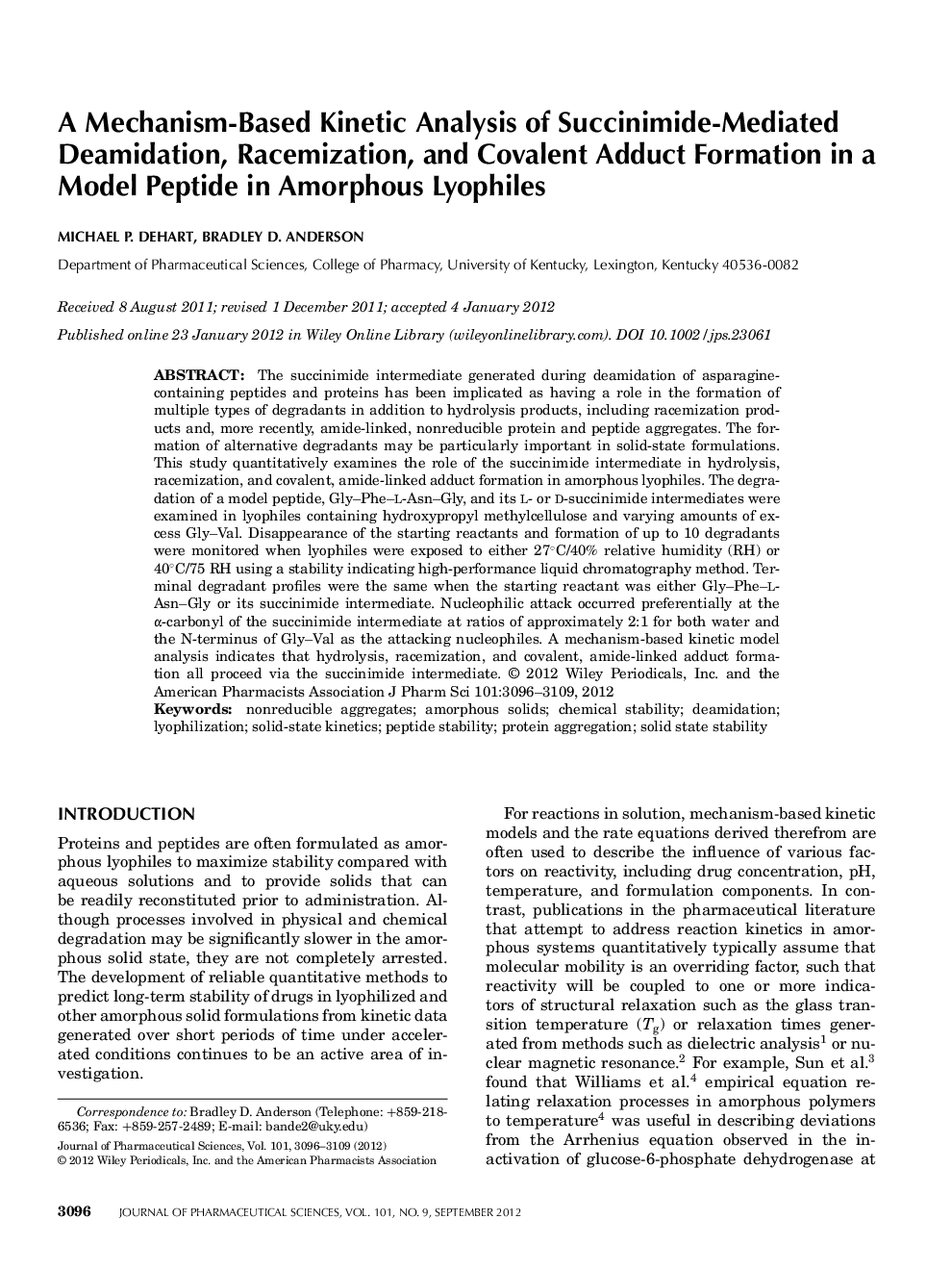| کد مقاله | کد نشریه | سال انتشار | مقاله انگلیسی | نسخه تمام متن |
|---|---|---|---|---|
| 2485934 | 1114371 | 2012 | 14 صفحه PDF | دانلود رایگان |

ABSTRACT:The succinimide intermediate generated during deamidation of asparagine-containing peptides and proteins has been implicated as having a role in the formation of multiple types of degradants in addition to hydrolysis products, including racemization products and, more recently, amide-linked, nonreducible protein and peptide aggregates. The formation of alternative degradants may be particularly important in solid-state formulations. This study quantitatively examines the role of the succinimide intermediate in hydrolysis, racemization, and covalent, amide-linked adduct formation in amorphous lyophiles. The degradation of a model peptide, Gly–Phe–l-Asn–Gly, and its l- or d-succinimide intermediates were examined in lyophiles containing hydroxypropyl methylcellulose and varying amounts of excess Gly–Val. Disappearance of the starting reactants and formation of up to 10 degradants were monitored when lyophiles were exposed to either 27°C/40% relative humidity (RH) or 40°C/75 RH using a stability indicating high-performance liquid chromatography method. Terminal degradant profiles were the same when the starting reactant was either Gly–Phe–l-Asn–Gly or its succinimide intermediate. Nucleophilic attack occurred preferentially at the α-carbonyl of the succinimide intermediate at ratios of approximately 2:1 for both water and the N-terminus of Gly–Val as the attacking nucleophiles. A mechanism-based kinetic model analysis indicates that hydrolysis, racemization, and covalent, amide-linked adduct formation all proceed via the succinimide intermediate. © 2012 Wiley Periodicals, Inc. and the American Pharmacists Association J Pharm Sci 101:3096–3109, 2012
Journal: Journal of Pharmaceutical Sciences - Volume 101, Issue 9, September 2012, Pages 3096–3109